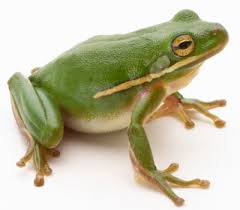Stamp: Arrow Poison Frog, Bromeliad (Saint Vincent and The Grenadines 1999)
Arrow Poison Frog, Bromeliad (Saint Vincent and The Grenadines 1999)
12 April (Saint Vincent and The Grenadines ) within release Fauna and flora goes into circulation Stamp Arrow Poison Frog, Bromeliad face value 70 East Caribbean cent
| Stamp Arrow Poison Frog, Bromeliad in catalogues | |
|---|---|
| Michel: | Mi: VC 4592 |
| Stamp Number: | Sn: VC 2684e |
Stamp is square format.
Also in the issue Fauna and flora:
- Stamp - Arrow Poison Frog, Bromeliad face value 70;
- Stamp - Cactus Wren, Saguaro Cactus face value 70;
- Stamp - Cecropia Tree, Howler Monkey face value 70;
- Stamp - Cecropia Tree, Toucan face value 70;
- Stamp - Collared Lizard, Barrel Cactus face value 70;
- Stamp - Cowblinder Cactus, Gilamonster face value 70;
- Stamp - Coyote, Prickly Pear Cactus face value 70;
- Mini Sheet - Fauna flora of the world face value 12*70;
- Stamp - Fer-de-Lance, Zebra Plant face value 70;
- Stamp - Green Turtle (Chelonia mydas) face value 20;
- Stamp - Hedgehog Cactus, Roadrunner face value 70;
- Stamp - Jaguar, Tillandsia face value 70;
- Stamp - Lesser Bird of Paradise, Aristolochia face value 70;
- Stamp - Macaw, Kapok Trees face value 70;
- Stamp - Margay, Sierra Palm face value 70;
- Stamp - Morning Dove, Organ Pipe Cactus face value 70;
- Stamp - Ocitillo, Puma face value 70;
- Stamp - Organ Pipe Cactus, Gray Fox face value 70;
- Stamp - Paloverde Tree, Burrowing Owl face value 70;
- Stamp - Parides sp., Erythrina sp. face value 70;
- Stamp - Rattlesnake Orchid (Pholidota imbricata), Heliconius phyllis face value 70;
- Stamp - Red Tailed Hawk, Ocitillo face value 70;
- Stamp - Saguaro Cactus, Gila Woodpecker face value 70;
- Stamp - Saguaro Cactus, Jaack Rabbit face value 70;
- Stamp - Strangler Fig, Basilisk Lizard face value 70;
- Stamp - Tree Fern, Bat Eating Hawk face value 70;
Stamp Arrow Poison Frog, Bromeliad it reflects the thematic directions:
Amphibians are ectothermic, anamniotic, four-limbed vertebrate animals that constitute the class Amphibia. In its broadest sense, it is a paraphyletic group encompassing all tetrapods, excluding the amniotes (tetrapods with an amniotic membrane, such as modern reptiles, birds, and mammals). All extant (living) amphibians belong to the monophyletic subclass Lissamphibia, with three living orders: Anura (frogs), Urodela (salamanders), and Gymnophiona (caecilians). Evolved to be mostly semiaquatic, amphibians have adapted to inhabit a wide variety of habitats, with most species living in freshwater, wetland or terrestrial ecosystems (such as riparian woodland, fossorial and even arboreal habitats). Their life cycle typically starts out as aquatic larvae with gills known as tadpoles, but some species have developed behavioural adaptations to bypass this.
Animals are multicellular, eukaryotic organisms of the kingdom Animalia (also called Metazoa). All animals are motile, meaning they can move spontaneously and independently, at some point in their lives. Their body plan eventually becomes fixed as they develop, although some undergo a process of metamorphosis later on in their lives. All animals are heterotrophs: they must ingest other organisms or their products for sustenance.
A frog is any member of a diverse and largely carnivorous group of short-bodied, tailless amphibians composing the order Anura[(coming from the Ancient Greek ἀνούρα, literally 'without tail'). The oldest fossil "proto-frog" Triadobatrachus is known from the Early Triassic of Madagascar (250 million years ago), but molecular clock dating suggests their split from other amphibians may extend further back to the Permian, 265 million years ago. Frogs are widely distributed, ranging from the tropics to subarctic regions, but the greatest concentration of species diversity is in tropical rainforest. Frogs account for around 88% of extant amphibian species. They are also one of the five most diverse vertebrate orders. Warty frog species tend to be called toads, but the distinction between frogs and toads is informal, not from taxonomy or evolutionary history.



